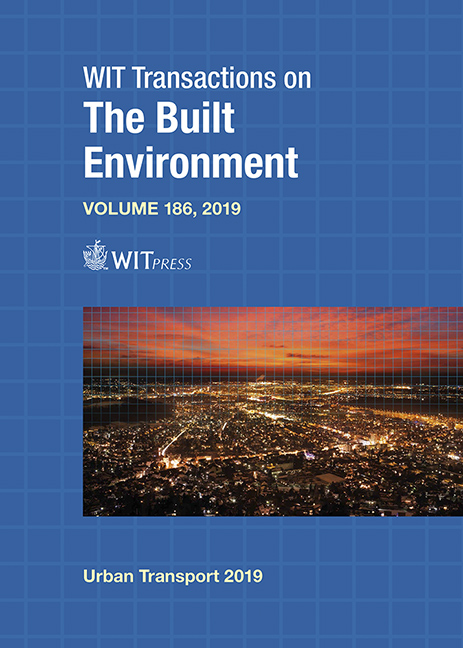SHIPPING EMISSIONS AND THEIR IMPACT ON AIR QUALITY IN URBAN COASTAL AREAS: PRESENT AND FUTURE SCENARIOS
Price
Free (open access)
Transaction
Volume
186
Pages
7
Page Range
145 - 151
Published
2019
Size
569 kb
Paper DOI
10.2495/UT190131
Copyright
WIT Press
Author(s)
ALEXANDRA MONTEIRO, MICHAEL RUSSO, CARLA GAMA, CARLOS BORREGO
Abstract
Due to its dependence on fossil fuel combustion, emissions from the marine transport sector can significantly contribute to air pollution, particularly over coastal areas where most people live. The AIRSHIP research project (http://airship.web.ua.pt/) aims to evaluate this contribution and how it affects air quality, with Portugal as case study and using a numerical air quality modelling approach with high-resolution emission data. Shipping emissions from the STEAM project inventory were compiled and pre-processed at an hourly and high spatial resolution, regarding current (2015) scenario and future (2030–2050) projections. Scenarios with and without the maritime emissions were then simulated with the WRF-CHIMERE modelling system, amply tested and validated over Europe and Portugal, in order to evaluate its impact on air quality for both present and future scenarios. This modelling system was applied first for Europe (27 x 27 km2) and then to the Portugal domain using a nesting approach with a sufficient spatial high-resolution (3 x 3 km2) to allow the estimation of the impact over urban coastal areas. The talk will present part of the results of the AIRSHIP research project, finishing in July 2019, namely regarding the comparison of the modelling results (with and without considering maritime emissions), for both present and future scenarios, with focus over the main urban coastal areas of Portugal and considering the main atmospheric pollutants – NO2, PM, SO2 and O3. Preliminary results highlight the major urban areas affected by shipping transport – Porto, Lisbon and south of Lisbon – for both present and future scenarios. For present conditions, maritime emissions are responsible for 10%–20% of the PM and NOx mass concentrations over those urban areas. Regarding future projections, a reduction of this impact is expected (4–5%), mainly in terms of NO2 and PM10 pollutants.
Keywords
shipping emissions, future projections, modelling, air quality





